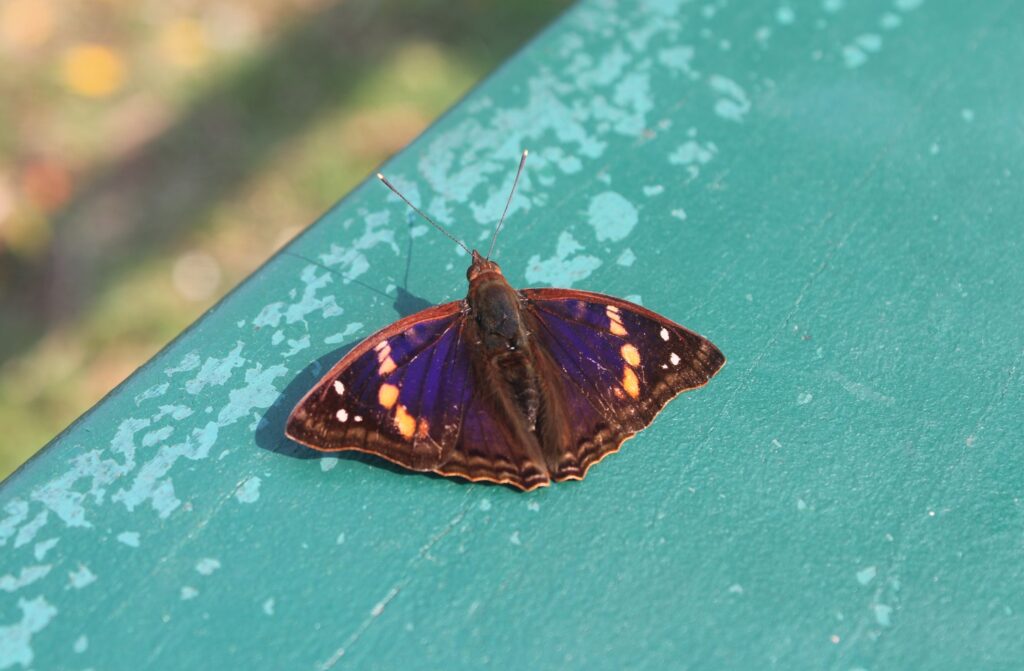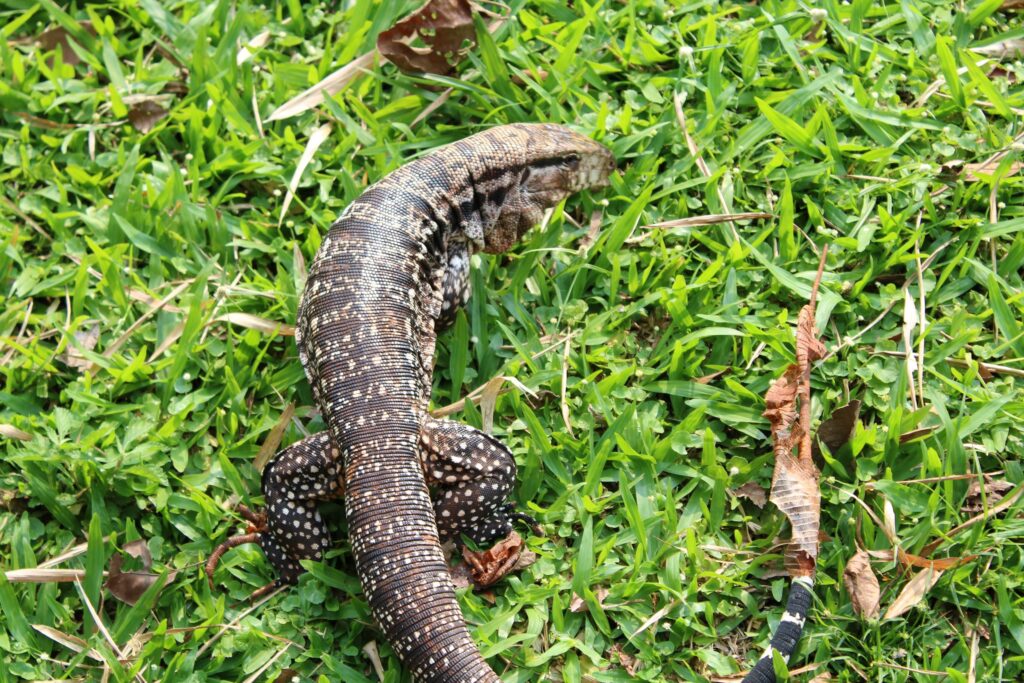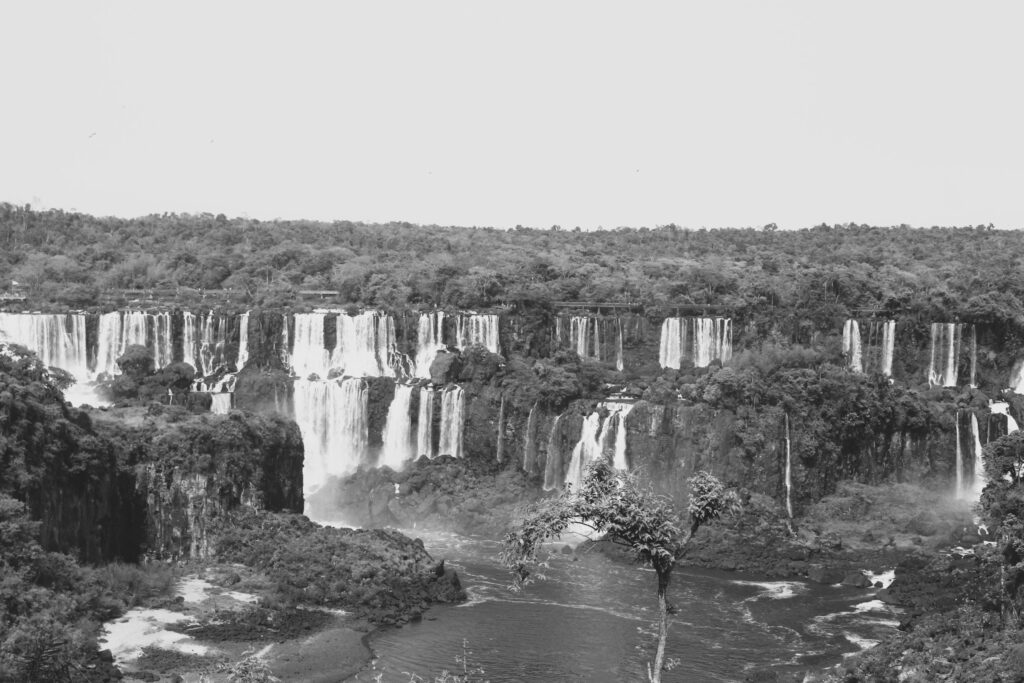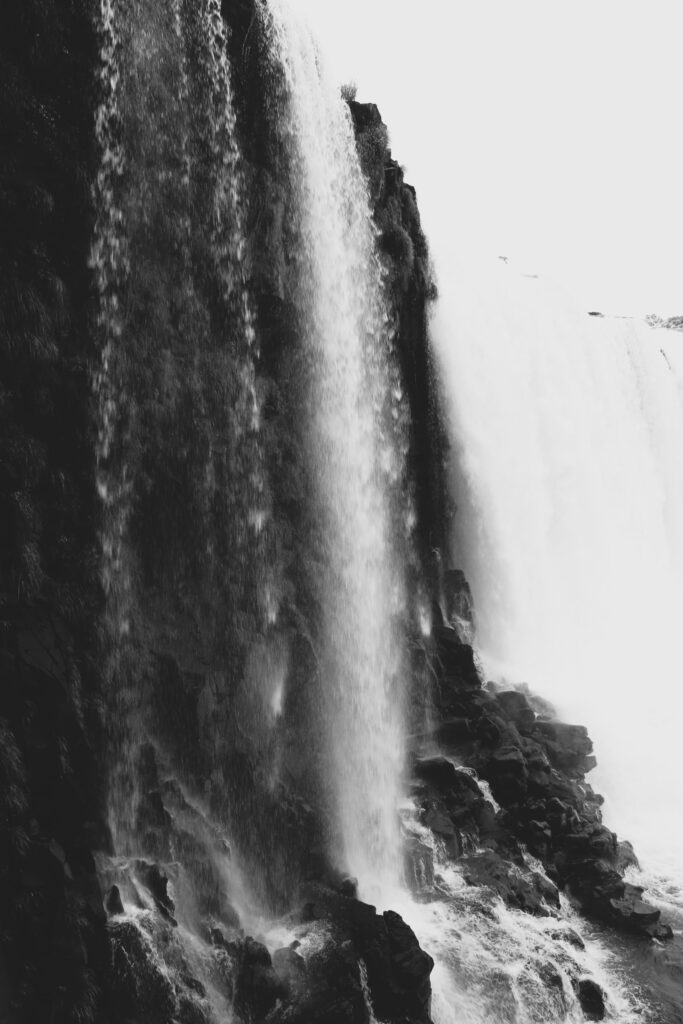The Cataratas do Iguaçu are located in Brazil at the exit of Foz do Iguaçu. This natural wonder is located at the border with Argentina but not with Paraguay. Considering both sides as one, they are some of the biggest waterfalls in the world. Most are located on the Argentinian side rather than the Brazilian side. The river starts in the Paraná River and finishes in the area of the city of Curitiba, in southeastern Brazil. It is definitely a place to visit in South America, no matter which side. It is an incredible experience, but the impact of climate change is visible. In some parts, there is not enough water flowing in the cascade as it dried a lot in the last decade. However, it is a natural wonder worth visiting. I thought going once would be enough, but I will return soon.
In this park, it is a bit different. You take a double-decker bus leading you to the trails’ entrance. It is included in your ticket as you do not really have options. It is highly recommended that you take the bus as it is an important route, and even if it is in the park, there is a chance of encountering jaguars. Those trails lead you to the waterfalls or other points of observation. You can stop at the place you want, depending on what you want to see. Most stop at the end, in front of the Belmond Hotel, a pink building you can see from the Argentinian side. From there, you can see almost all the falls. When I was there, only some of the trails in this specific sector were completely open as they were repainting the path for safety issues. The work should be done now, and you should be able to enjoy everything. There are also multiple rest stops, restaurants, and bathrooms. They are located on the trails but also at the entrance of some, where you wait for the buses. You can also hire a guide to walk with you, and they speak multiple languages, such as English, Spanish, Portuguese, French, and probably others.


The Brazilian side of the falls is allegedly filled with more wild animals than the Argentinian side. I have seen more birds and lizards on that side. When I took a picture of one, he changed his skin. A lot of butterflies also, but not more than in Argentina. Still, it is a zone with many jaguars, so you need to pay attention. If you see one, you must avoid provoking the animal at all costs. It is really “Instagramable,” but it might not be the best time for a picture unless you are a professional.


Visiting Cataratas do Iguaçu on the the Brazilian side is cheaper, possibly because it is smaller than the equivalent on the Argentinian side. For someone considered local or part of the Mercosur, like Paraguay, it costs 88.00 reais, which is 15 American dollars or 14 euros. However, if you want to use your “Cédula,” you must be sure you are paying with a Paraguayan bank card. Trying to pay with a foreign card while showing a Paraguayan identity paper will not work out. If you do not have your residency in Paraguay yet or do not have a bank account, it costs 97.00 reais, almost 17 dollars or 16 euros. If you pay the last one, it is half the price of going to Argentina.
Cataratas do Iguaçu is open every day of the year, no matter if it is a holiday or not, from nine in the morning to four in the afternoon. It did not happen recently, but if they do have to change their schedule, it will be written on their social media. As for transportation, it is easier on the Brazilian side than the Argentinian side since Paraguay is facing Brazil. The best way is to walk on the international bridge. There is technically a border, but they will only stop you if they want to. It is recommended that you walk to Brazil as the traffic on the Paraguayan side is horrible. You will be stuck in a car for two to three hours just to do three to four kilometres. Take an Uber just after you leave the bridge (there is no Bolt in Brazil). You can also take the first bus you see that goes to the Terminal de Transporte Urbano Pedro Antônio de Nadai in Foz do Iguaçu. Then, take bus #120. They are quite frequent, no matter the time of day. It is remarkable that on Brazilian buses, you can pay with a Visa or Mastercard directly with the PPS (Pay-Pass System). The ride to the park is around 45 minutes and does not stop as frequently as the other city buses. The only important stop before the falls is the airport. To return home, you do the same thing, but the other way around.

Bolt also has a fixed price of around 250K Guaraníes, or 32 dollars, 30 euros. They are technically not present in Brazil, but the ones from Paraguay offer the service. To return to Paraguay, you need to contact the driver personally. You can also hire a driver via a contact of yours. It will cost more, but you will have direct service, almost door-to-door. It depends on whether you walk on the bridge or if the person takes you from your hotel in Ciudad del Este.
Opening Hours of Cataratas do Iguaçu, On The Brazil Side
Monday: 9 AM to 4 PM
Tuesday: 9 AM to 4 PM
Wednesday: 9 AM to 4 PM
Thursday: 9 AM to 4 PM
Friday: 9 AM to 4 PM
Saturday: 8:30 AM to 4 PM
Sunday: 8:30 AM to 4 PM
If you want to visit one of the biggest waterfalls in the world, visit Cataratas do Iguaçu, Brazil!


